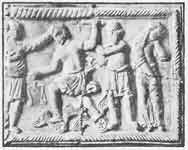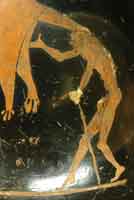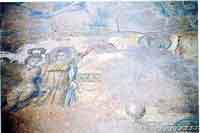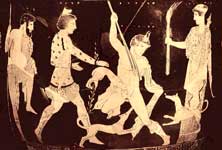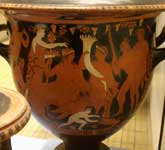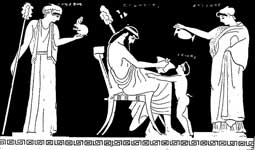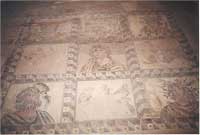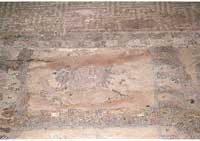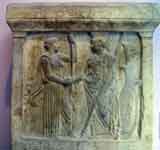.
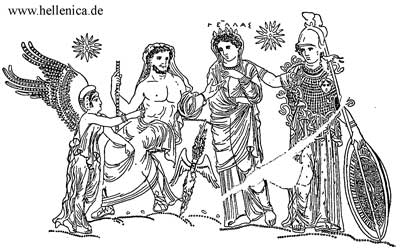
Zeus, Athena and Nike supporting Hellas, the personification of Greece
Aergia (laziness)
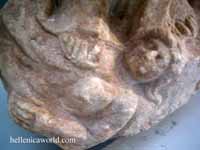
Nemesis stepping on Adikia (fragment of a sculpture) , Dion Archaeological Museum
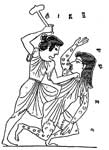
Dike and Adikia (Justice and Injustice)
Adikia (Injustice )
Aergia (Laziness)
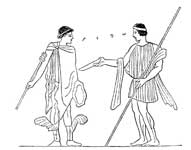
Agon (Contest, such as athletic)
Aidos (Shame)
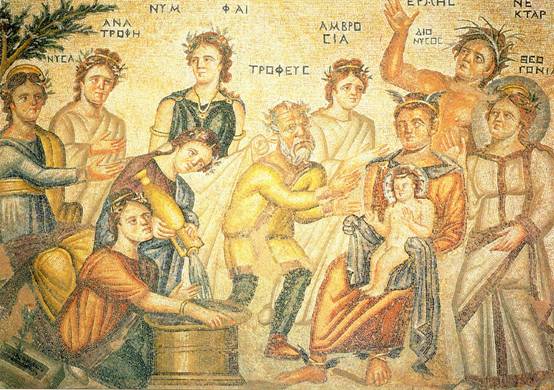
Personifications: Nysa, Anatrofi, Nymphs, Tropheus, Ambrosia, Hermes and Dionysus, Nektar and Theogonia, Paphos Mosaics
Amphillogiai ('Disputes', Eris)
Amechania (Helpnessness)
Anangke ( Necessity)
Apate (Deceit)
Arete (Excellence, Valor)
Basileia ( Monarchy)
Boule (Council)
Bia (Violence)
Caerus , gr. Kairos
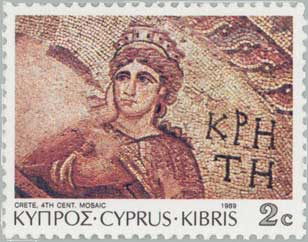
Personification of Crete Paphos Mosaics
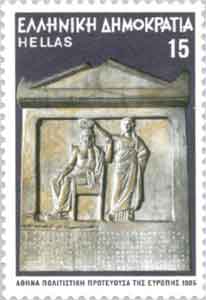
Democracy glorifies Demos, Agora Museum, Athens
Demokratia (Democracy)
Demos (Population)
Pausanias: A portico is built behind with pictures of the gods called the Twelve. On the wall opposite are painted Theseus, Democracy and Demos. The picture represents Theseus as the one who gave the Athenians political equality.
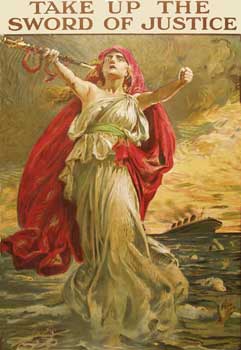
Dike (Justice)
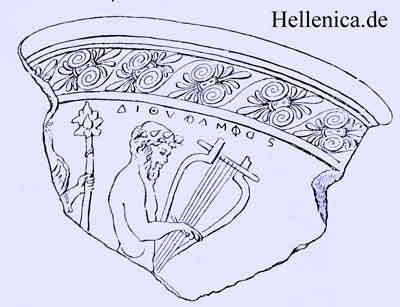
Personification of Dithyrambus
Dysnomia (lawlessness)
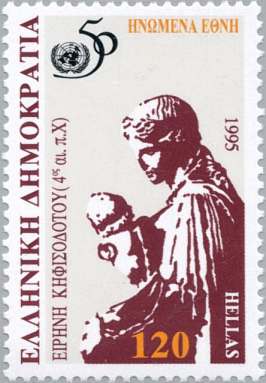
Eirene and Ploutos and a Greek Stamp dedicated to the United Nations and Peace.
Eirene (Peace)
Pausanias: After the statues of the eponymoi come statues of gods, Amphiaraus, and Eirene (Peace) carrying the boy Plutus (Wealth).
Erebos (Darkness, married with Nyx)
Eris (Discord and Strife, Companion of Ares)
Eukleia (Good Repute)
Eunomia (Good Orde, Horae)
Eutaxia (Good Order)
Geras (Old Age)
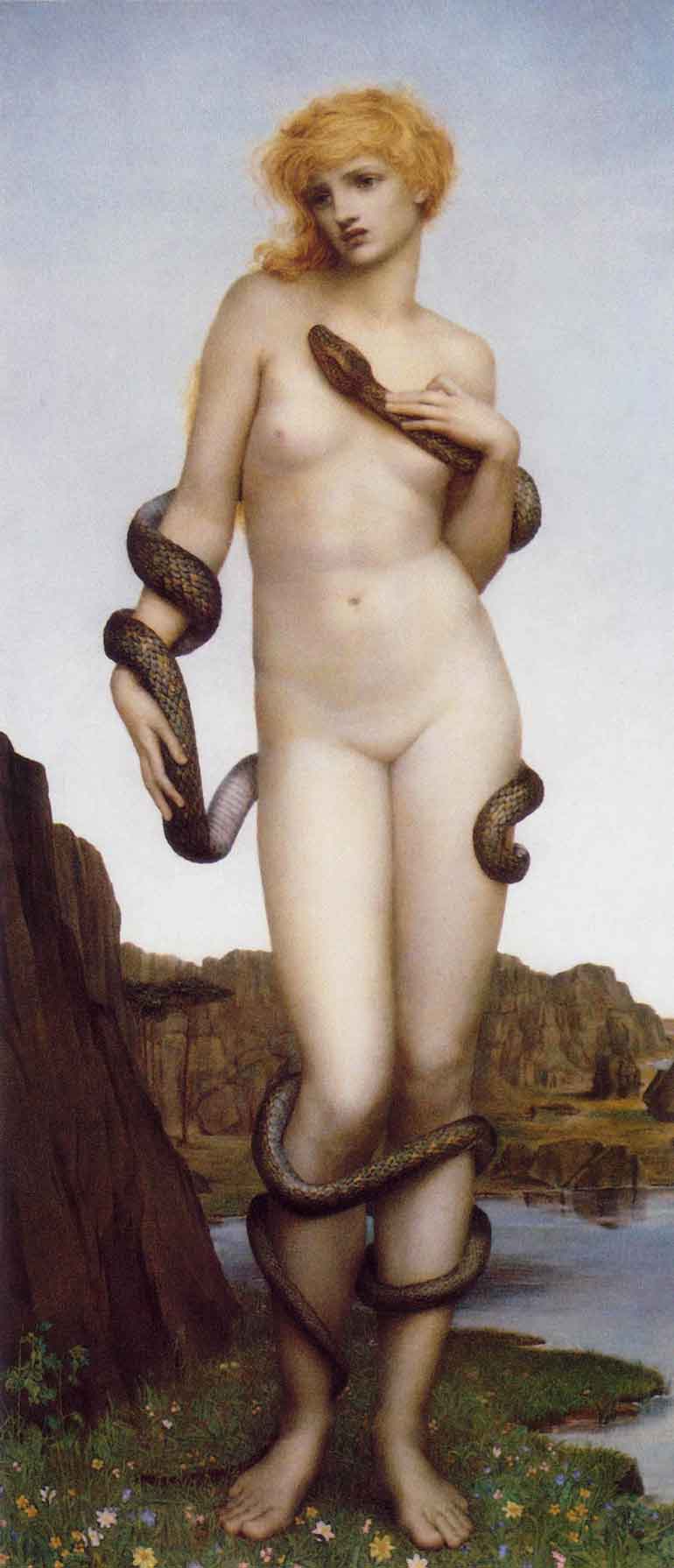
Cadmus and Harmonia, Evelyn De Morgan
Harmonia (Harmony, daughter of Ares and Aphrodite!)
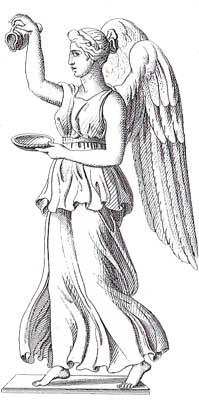
Hebe (Youth)
Hellas (Greece)
Hemera (Day, daughter of Nyx and Erebos and sister of Hypnos)
Horme (energetic activity and effort)
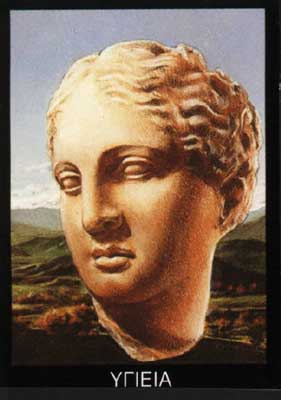
Hygeia (Health)
Homonoia (Concord)
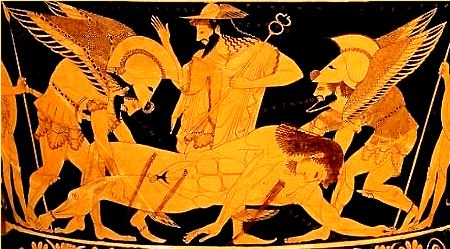
Euphronios Krater, Hermes (Psychopompos) in the Middle with the twin brothers Thanatos and Hypnos (Death and Sleep) moving Sarpedon, the son of Zeus to Hades the world of the dead. Calyx-krater, ca. 515 BC; Archaic; red-figure, Metropolitan Museum of Art Signed by Euxitheos, as potter; Signed by Euphronios, as painter, Greek, Attic ( Etruscan Sculpture )
Hypnos (Sleep father of Icelus, Orpheus, Phobetor and Phantasos. A twin brother of Thanatos, son of Nyx and Erebos)
Lyssa (raving madness)
Mnemosyne (Memory)
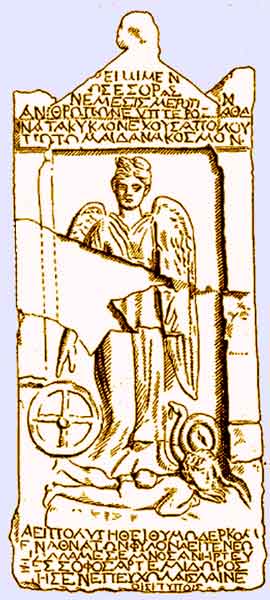
|
I am - you see - the Nemesis of men, well winged, immortal, dwelling in the sky. |
Nemesis (Retribution)
Pausanias: The dwelling houses are on the coast, but a little way inland is a sanctuary of Nemesis, the most implacable deity to men of violence. It is thought that the wrath of this goddess fell also upon the foreigners who landed at Marathon. For thinking in their pride that nothing stood in the way of their taking Athens, they were bringing a piece of Parian marble to make a trophy, convinced that their task was already finished. Of this marble Pheidias made a statue of Nemesis, and on the head of the goddess is a crown with deer and small images of Victory. In her left hand she holds an apple branch, in her right hand a cup on which are wrought Aethiopians....Neither this nor any other ancient statue of Nemesis has wings, for not even the holiest wooden images of the Smyrnaeans have them, but later artists, convinced that the goddess manifests herself most as a consequence of love, give wings to Nemesis as they do to Love.
Nike (Victory, daughter of Pallas and Styx. Nike's other brothers and sisters are Cratos (Strength), Zelos (Zeal) and Bia (Force)).
Nyx (Night)
Oligarchia (Oligarchy)
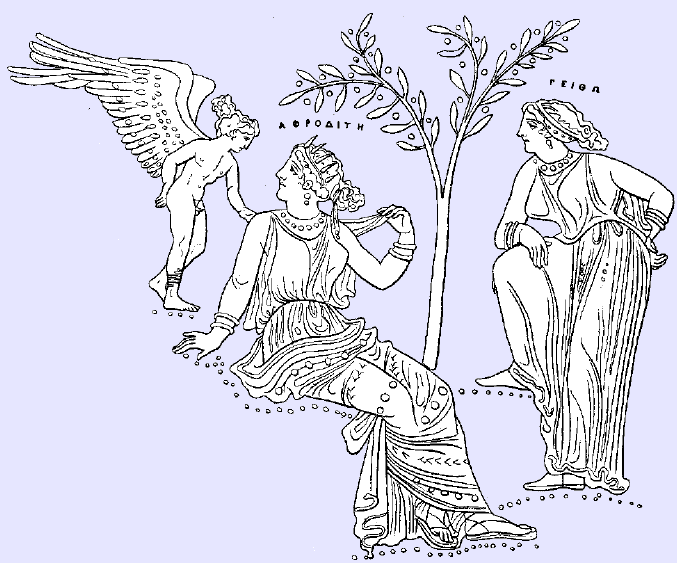
Eros, Aphrodite and Peitho
Peitho (Persuasion, son of Aphrodite and Hermes)
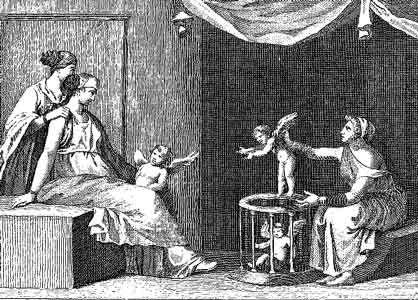
The three loves (Himeros, Eros and Pothos), Penia and Peitho and Aphrodite
Penia (Poverty)
Penthus (Grief, gr. Penthos)
Pheme (fame and renown)
Philia (Friendship)
Phyle/Phylai (Tribe/s)
Phthonus (jealousy)
Poine (Ποινή), (retaliation) sometimes mentioned as one being, and sometimes in the plural. They belonged to the train of Dike, and are akin to the Erinnyes (Aeschyl. Choeph. 936, 947; Pausanias 1.43.7.)
Pompe (Personification of festal Processions)
Poros (Expediency, husband of Penia)
Pothos (Desire a son of Aphrodite)
Ploutos (Wealth)
Soteria (Salvation, Safety, Recovery) Temple in Patrae, Pausanias 7.21
Thanatos (Death, Twin brother of Hypnos)
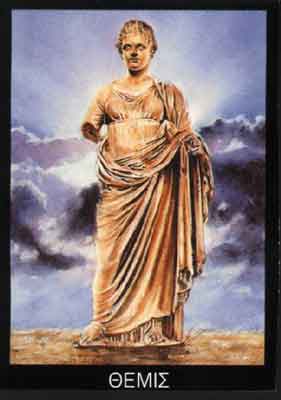
Themis (Law)
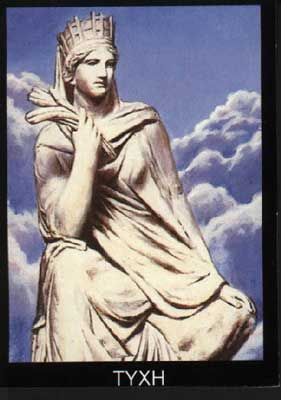
Tyche, a drawing based on the work the Tyche of Antiochia of Eutychides of Sicyon. Copy from original of early third century BC, Vatican Museum, Rome.
Tyche (Good Fortune)
Zelos (Enthusiasm and zeal, son of Styx and Pallas)
Personifications in the Apotheosis of Homer

Homer 28) crowned by the Macedonian Greek Kings of Egypt Arsinoe III and Ptolemy IV who represent the Chronos and Oikoumene (Time and World) (next to Homer Odyssey and the Illiad 26,27) . 15–-25) a crowded group of participants in the procession, who appear as personifications of History, Poetry, Tragedy and Comedy, Physis, Arete, Mneme, Pistis and Sophia. 25) the young boy is Mythos (Myth) and the girl 23) History. One source considers the persons behind History (23) moving to the right as tragedy, comedy, nature, integrity, memory, fidelity, and wisdom although 2 persons are then without identification. See the Apotheosis of Homer
Personification of the four Seasons, Paphos Mosaics, House of Dionysus
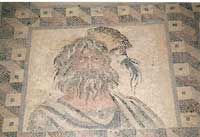
|
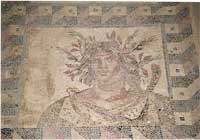
|
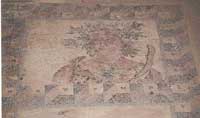
|
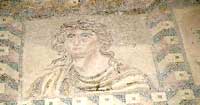
|
Herodotus Book 8:
To his declaration (Themistocles), “that the money must needs be paid, as the Athenians had brought with him two mighty gods— (Peitho) Persuasion and (Anangke)Necessity,” they made reply, that “Athens might well be a great and glorious city, since she was blest with such excellent gods; but they were wretchedly poor, stinted for land, and cursed with two unprofitable gods, who always dwelt with them and would never quit their island—to wit, (Penia) Poverty and (Amechania) Helplessness. These were the gods of the Andrians, and therefore they would not pay the money.
America Guided by Wisdom (after John James Barralet), 1815, etching and engraving: first state, Benjamin Tanner (1775-1848) , Yale University Art Gallery (including Hermes)
"Personifications" in Art
Art and Literature. William Bouguereau
See also : Greek Mythology. Paintings, Drawings
| Ancient Greece
Science, Technology , Medicine , Warfare, , Biographies , Life , Cities/Places/Maps , Arts , Literature , Philosophy ,Olympics, Mythology , History , Images Medieval Greece / Byzantine Empire Science, Technology, Arts, , Warfare , Literature, Biographies, Icons, History Modern Greece Cities, Islands, Regions, Fauna/Flora ,Biographies , History , Warfare, Science/Technology, Literature, Music , Arts , Film/Actors , Sport , Fashion --- |

